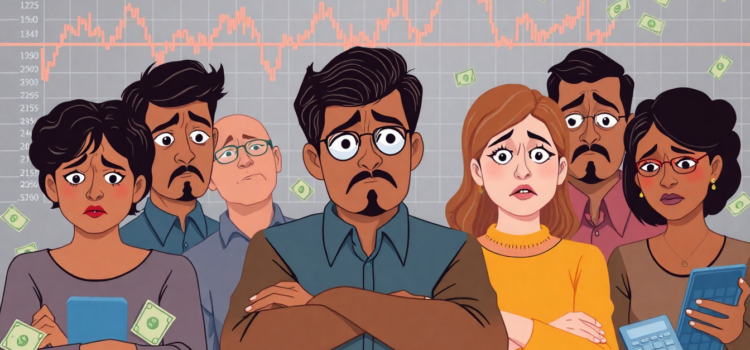
Middle-Income Americans: Navigating Financial Stress Amid Economic Uncertainty
Introduction
Financial stress among middle-income Americans is rising. With 62% of this group reporting stress over their finances, a significant rise from 57% in late 2024, the prevalence of economic uncertainty is undeniable. Inflation, the soaring cost of living, and looming financial hardships are cornering families, forcing them to confront a challenging economic landscape.
In this blog post, uncover why economic uncertainty impacts household finances more severely than before, explore the inflation concerns for middle-income families, and gain insights on coping mechanisms, including spending cuts and emergency savings strategies. Understand the broader financial outlook for 2025 and how middle-income Americans plan to navigate these stormy waters.
The Economic Landscape: A Snapshot
Impact of Economic Uncertainty on Household Finances
The specter of economic uncertainty is looming large over middle-income households. This group is deeply influenced by the fluctuating economic climate, with a staggering 46% expecting worsened financial states in the coming year, marking a significant leap from 27% in December 2024.
Middle-income families are highly susceptible to the ramifications of this uncertainty, resulting in altered financial behaviors and expectations. Significantly, only 18% hold optimism for their financial future, down from a previous figure of 26%.
Rising Costs and Financial Anxiety
Inflation Concerns: A Primary Stressor
Amid rising cost-of-living anxiety, inflation stands out as the predominant worry for middle-income families. These households are bracing for higher costs across essentials:
- 86% expect increased food and grocery expenses.
- 77% foresee higher utility bills.
- 76% predict surging fuel expenses.
The Primerica Household Budget Index™ highlighted a 0.3% decline in purchasing power for necessities in February 2025, underscoring the growing disparity between income and expenses.
Adaptation: Middle-Income American Responses
Spending Cuts and Financial Strategies
As financial pressures intensify, 78% of middle-income households are cutting back on non-essential spending, the highest rate observed in two years. Moreover, there’s a pronounced shift towards saving, with 64% safeguarding finances for emergencies compared to just 59% the previous year.
Due to these pressures, 52% are considering or taking on second jobs, illustrating the widespread impact on the job market and individual livelihoods. Meanwhile, these families are adopting the spending habits characteristic of lower-income households, prioritizing debt repayment in the face of rising interest rates.

For more information, visit our blog.
Conclusion
In navigating this turbulent economic scenario, middle-income Americans are reshaping their financial game plans. The strategies now heavily emphasize cutting non-essential spending, bolstering emergency funds, and in some cases, exploring secondary employment.
Going forward, these families will need to continue adapting to the financial pressures amid soaring inflation and dwindling purchasing power. Sustained economic resilience will require both personal adjustments and broader systemic changes.
Call to Action: Share your experiences with financial stress and strategies in our comments section or on social media. Engage with our community to learn and share coping mechanisms during economic uncertainty.
FAQ
What are the main causes of financial stress for middle-income Americans in 2025?
Inflation is the primary cause of financial stress as it raises the cost of essentials such as groceries, utilities, and fuel.
How are middle-income families coping with rising costs?
Families are cutting back on non-essential spending, increasing their emergency savings, and some are considering taking second jobs to manage financial pressures.
What is the financial outlook for middle-income Americans in 2025?
The financial outlook remains challenging with ongoing concerns about inflation and economic uncertainty, leading to changes in spending habits and saving approaches.
Are middle-income Americans optimistic about their future financial situation?
Only 18% are optimistic about improvements in their financial situation within the next year, reflecting prevailing economic pessimism among middle-class families.










Comments